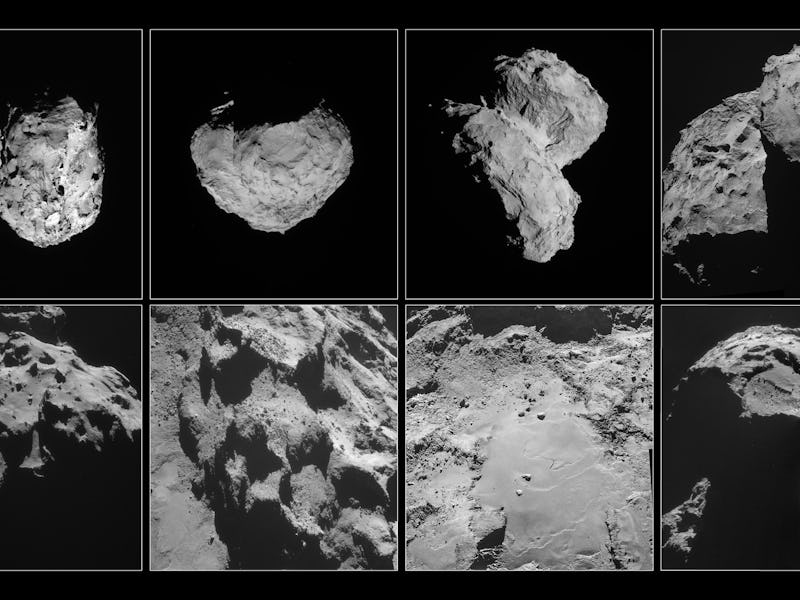Are Comets Fluffy or Holey? Space Miners of the Future Need to Know!
Let's look inside those icy space balls.

The European Space Agency Rosetta mission has blessed space scientists with an incredible bounty of data about comets. Among the amazing things 67P/Churyumov-Gerasimenko taught us is that comets aren’t all that dense — it’s given us a peek under the hood, revealing the physical interior structure of those icy balls.
We’ve known for some time that comets are less dense than liquid water, because water expands when it freezes into ice, as Phil Plait points out recently at Slate. But the physical study of comets points to densities that even lower than we thought.
That’s only possible in one of two ways: comets are made of a fluffier, powder-like rock; or they’re riddled with holes and cavities under the surface. ESA scientists decided to use 67P as a case study to finally put the question to rest.
New Norcia ground station in Australia.
The answer, as Plait points out, comes thanks to radio waves. While Rosetta orbits 67P, it fires radio waves back to the New Norcia ground station in Australia. Scientists can determine how the wavelengths of these signals change over time to measure very small tweaks in Rosetta’s velocity. By extension, astronomers can analyze what’s changing 67P’s speed. This could be gravity, solar winds, or even — you guessed it — what makes up the comet’s interior.
Thanks to these waves, the question of 67P’s fluffy or holey nature could be settled: It is, without a doubt, fluffy!
As an achievement for space science, that we have an answer is awesome. But it’s even better when you think about the long-term future of space mining. Earlier this month, another group of scientists proved that we might be able to mathematically predict what an asteroid is made of, which would be a boon to asteroid prospectors looking to dig up precious metals or water. And we’ll be able to know where to land any mining robots or or space miners.
This new insight into comets — using radio waves to describe what they look like — could be used in a similar way. Although comets lack metals, the ice they possess might be vital in a future where spacecraft use water as a form of propulsion fuel.
And because comets tend to be a bit more volatile than their asteroid counterparts, we’ll definitely have to stick the fluffy landing.